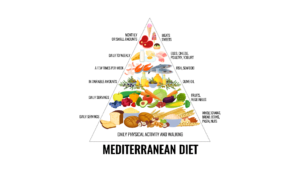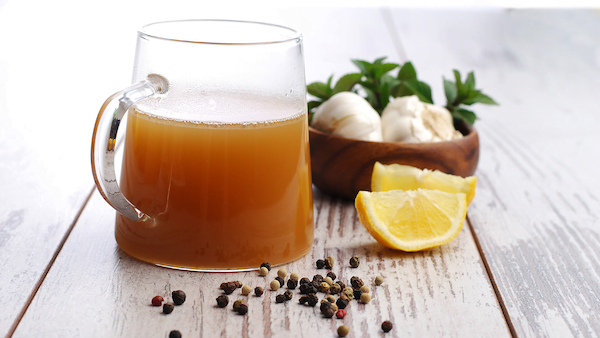Scientific research has helped to reveal an additional organ system that has been invisible to the naked eye for much of human history: the gut microbiome. Just like we need lungs to breathe and a heart to pump blood around our bodies, we now know that the community of microorganisms living in our gut operates like a vital organ and is just as crucial for our health.
Join Benjamin Makeham from Activated Probiotics in an overview of the microbiome and a look at the incredible differences between probiotic strains and the unique ways they impact health.
The importance of the gut microbiome
When the gut microbiome is healthy, the whole body benefits. However, just like any other organ, the gut microbiome can become disrupted and negatively impact our health. This is referred to as ‘gut dysbiosis’ and it has now been associated with many chronic diseases, including irritable bowel syndrome, depression, asthma, acne, osteoporosis and countless others¹. The rise in gut dysbiosis (and its negative health effects!) are thought to be due to several factors. Changing diets with lower intakes of fibre and unrefined plant foods, stressful lifestyles, low activity levels and increased use of antibiotics – these factors reduce the population and change the types of microorganisms found in the gut, creating gut dysbiosis.
Fortunately, probiotics have emerged as a way to intervene.
What is a probiotic and how do they work?
Probiotics are living microorganisms that have been found to be beneficial to health when taken as a supplement. Within the gut, probiotics that we take and the microorganisms that live in our body perform many different biological actions that can influence our health.
They use the food we eat to grow and replicate and, through this process, they produce compounds called metabolites which we absorb like nutrients. These metabolites can travel through circulation and interact with other body systems. They can also interact with the different types of cells in our gut, including:
- The cells which make up the lining of the intestines
- Nerve cells which connect the digestive tract to the brain
- Immune cells stationed in the gut to prevent infections from the outside world
These interactions can change how the cells function and the messages they are sending to other parts of the body. This interaction with the rest of the body means that the microorganisms and probiotic bacteria in the gut can impact other organ systems and, as a result, many aspects of human health. Different probiotic supplements will offer different health benefits, and this all depends on the probiotic strains being used.
What is a probiotic strain?
As in the plant kingdom, probiotic bacteria are classified according to the family, genus and species they belong to. Bacteria from the Bifidobacterium genus are commonly found in probiotic supplements. There are over 24 different species of Bifidobacterium that can be used, such as Bifidobacterium breve, Bifidobacterium longum and Bifidobacterium infantis. Despite being similar, they all have noticeable differences.
Interestingly, bacteria within the same species can still be quite different. For that reason, they are further classified into individual strains such as Bifidobacterium breve BR03 or Bifidobacterium breve B632 (with the BR03 and B632 being the strain names).
Even if two probiotics are of the same species, the genetic variation between different strains can be as significant as the difference between a human and a lemur. Because of these differences, each strain of probiotic bacteria will perform unique biological actions in the gut and therefore offer different health benefits. Just like medications, not all probiotics work in the same way.
To understand this further, let’s breakdown the aspects of Bifidobacterium breve BR03’s name:
Bifidobacterium is the genus. The genus can be thought of as a school that similar bacteria attend.
Breve is the species. Each species is a specific classroom at the Bifidobacterium school. Everyone in the class has similar interests and gets along really well, but all of the students are still unique individuals.
BR03 is the specific strain. The strains are the individual students within the breve classroom, who each have different talents, do different things and get different grades.
Without careful strain selection, you don’t know if you’re selecting a student who is good at maths or a student who is better at history.
What are some strain-specific health benefits of probiotics?
Despite sounding very similar, strains of the same probiotic species can behave very differently in the gut and will offer their own set of different health benefits. Because of their significant differences, we cannot assume that they will share any of the same benefits. Scientific research allows us to study each specific probiotic strain, identify their unique biological actions and understand how they impact our health.
Knowing this information helps us to select probiotic strains that will address our specific set of health concerns and improve our health in a targeted way. When a probiotic supplement doesn’t identify the specific strains being used, it is very difficult to know how they will benefit your health (if at all). Generalised statements about the benefits of a species, such as “acidophilus is good for people with IBS” or “plantarum is good for your mood”, are often incorrect. Quality research investigating the benefits of a probiotic will always be attached to a specific strain or a group of strains that have been researched together, not the species.
What areas of health can be targeted with specific probiotic strains?
While there are many strains that possess the ability to support our digestive health in some way, there are also specific strains which can target aspects of human health well beyond the gut.
Eczema
For example, Lactobacillus salivarius LS01 is a probiotic strain which has been shown to help regulate the immune response that contributes to eczema in the skin². In a human clinical trial, LS01 helped to significantly reduce the symptoms of mild eczema after 4 months of treatment when compared to placebo³. The participants who took LS01 had a 52% reduction in the severity of their symptoms.
Mood and sleep
There is a specific combination of probiotic strains that, in a human clinical trial, have been found to help improve mood balance and enhance sleep quality: Lactobacillus plantarum LP01, Lactobacillus rhamnosus LR06, Lactobacillus fermentum LF16 and Bifidobacterium longum BL04. Analysis of each individual strain in this formula found that they possess a range of biological actions which, when working together, impact gut-brain communication and improve mood and sleep.
Acne
Although sounding very similar to Lactobacillus salivarius LS01, research has demonstrated a very different biological action for another strain from the salivarius species, Lactobacillus salivarius LS03: it has been found to reduce inflammation associated with acne⁴. In a human clinical trial alongside two other probiotic strains (Bifidobacterium breve BR03 and Lactobacillus casei LC03), LS03 helped to significantly improve the symptoms of acne when compared to placebo⁵. The participants who took this strain-specific probiotic had a 31% reduction in the number of acne lesions after 4 weeks and a 39% reduction after 8 weeks.
Infant colic, muscle recovery and constipation
Bifidobacterium breve BR03 is a probiotic strain which has been widely-researched and found to offer benefits across a number of different aspects of health when paired with different combinations of probiotic strains. As above, it has been used in a strain-specific formulation which has been shown to relieve the symptoms of acne. BR03 has also been found to help reduce crying time in colicky infants when used in combination with Bifidobacterium breve B632. When used alongside Streptococcus thermophilus FP4 it has even been shown to help improve recovery time following exercise. Finally, when Lactobacillus plantarum LP01 was combined with this strain, they helped to relieve constipation and reduce bloating.
There are many more health concerns which can be improved through the use of specific probiotic strains, including bone density, asthma, immune health, IBS, vaginal health and more. With scientific research only scratching the surface of how the gut microbiome affects human health, it is expected that the application of specific probiotic strains for the management of specific health concerns will continue to expand.
How do you choose the best probiotic for you?
While there is a lot of research into the health effects of many different probiotic strains, it can be hard to identify their benefits when reading the label of a probiotic you may have purchased or been prescribed.
If a probiotic supplement has been formulated with researched probiotic strains that offer specific health benefits, this will often be indicated on the label. Look for phrases such as “clinically trialled”, “scientifically researched” or “clinically proven” probiotic strains or probiotic products.
A healthcare practitioner may also be able to provide additional information about the targeted health effects of a strain-specific probiotic that are not included on the label, especially if they are recommending it to you.
Much of the research identifying the health benefits of specific probiotic strains is also publicly available online, and can be a good source of information for those interested in learning more. You can start by simply searching the name of the specific probiotic strain and looking for information.
This article originally appeared on the Activated Probiotics Blog in March 2023.
References:
- Anwar, H., Irfan, S., Hussain, G., Naeem Faisal, M., Muzaffar, H., Mustafa, I., Mukhtar, I., Malik, S., & Irfan Ullah, M. (2020). Gut Microbiome: A New Organ System in Body. In Parasitology and Microbiology Research (pp. 1–20). IntechOpen.
- Drago L, Nicola L, Iemoli E, et al. Strain-dependent release of cytokines modulated by Lactobacillus salivarius human isolates in an in vitro model. BMC Res Notes. 2010;3:44.
- Drago L, Toscano M, De Vecchi E, Piconi S, Iemoli E. Changing of fecal flora and clinical effect of L. salivarius LS01 in adults with atopic dermatitis. J Clin Gastroenterol. 2012;46(S1):56–63.
- Deidda, F., Amoruso, A., Nicola, S., Graziano, T., Pane, M., & Mogna, L.New Approach in Acne Therapy A Specific Bacteriocin Activity and a Targeted Anti IL-8 Property in Just 1 Probiotic Strain, the L. salivarius LS03. Journal of Clinical Gastroenterology, 2018 52, S78–S81.
- Rinaldi, F., Marotta, L., Mascolo, A., Amoruso, A., Pane, M., Giuliani, G., & Pinto, D. Facial Acne: A Randomized, Double-Blind, Placebo-Controlled Study on the Clinical Efficacy of a Symbiotic Dietary Supplement. Dermatology and Therapy 2022












